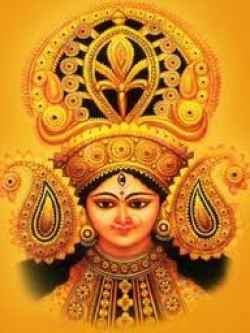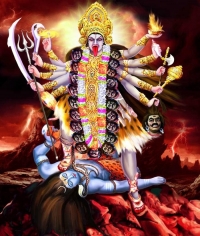Four Ashrams of Vedic life was based on an individual's Karma and Dharma. Every doctrine of ancient India, carved out by the ancient saints, is based on scientific and rational reasoning. However, to put them to use they needed to be socially embedded. Hence methods like, the Ashram system, were included in the Vedic society. The average life of an Indian was considered to be 100 years. Based on this there were four ashrams of Vedic life-
- The First Ashrama - "Brahmacharya" or the Student Stage
- The Second Ashrama - "Grihastha" or the Householder Stage
- The Third Ashrama - "Vanaprastha" or the Hermit Stage
- The Fourth Ashrama - "Sannyasa" or the Wandering Ascetic Stage
The goal of each stage or ashram was to fulfil the ideals on which these stages were divided.
The stages of ashram life imply that an individual takes shelter in all the four stages of life depending on his age. These stages stratify the duties that man has to practice in his lifetime. These four divisions are elucidated in ancient Manu's scripts. With such methodology the then contemporary society also aimed at holding the social institutions together. From an early age man was shown the paths of ethics, self-restraint, intelligence, pragmatism, love, compassion and discipline. He was guided to stay away from greed, cruelty, sloth, pride and several other vices.
History of Ashrams :
This system of ashramas is believed to be prevalent since the 5th century B.C.E. in Hindu society. However, historians say that these stages of life were always viewed more as 'ideals' than as a common practice. According to one scholar, even in its very beginnings, after the first ashrama, a young adult could choose which of the other ashramas he would wish to pursue for the rest of his life. Today, it is not expected that a Hindu should go through the four stages, but it still stands as an important "pillar" of Hindu socio-religious tradition.
Brahmacharya Ashram :
Brahmacharya is a period of formal education lasting until around age 25, during which, the student leaves home to stay with a guru and attain both spiritual and practical knowledge.
During this period, he is called a Brahmachari and is prepared for his future profession, as well as for his family, and social and religious life ahead.
Grihastha Ashram :
This period begins at marriage when one must undertake the responsibility for earning a living and supporting a family. At this stage, Hinduism supports the pursuit of wealth (​artha) as a necessity, and indulgence in sexual pleasure (kama), under certain defined social and cosmic norms. This ashrama lasts until around the age of 50. According to the Laws of Manu, when a person's skin wrinkles and his hair grays, he should go out into the forest. However, most Hindus are so much in love with this second ashrama that the Grihastha stage lasts a lifetime!
Vanaprastha Ashram :
The Vanaprastha stage begins when a person's duty as a householder comes to an end: He has become a grandfather, his children are grown up, and have established lives of their own.
At this age, he should renounce all physical, material and sexual pleasures, retire from his social and professional life, leave his home for a forest hut, where he can spend his time in prayers. He is allowed to take his spouse along but maintains little contact with the rest of the family. This kind of life is indeed very harsh and cruel for an aged person.
Sannyasa Ashram :
At this stage, a person is supposed to be totally devoted to God. He is a sannyasi, he has no home, no other attachment; he has renounced all desires, fears, hopes, duties, and responsibilities. He is virtually merged with God, all his worldly ties are broken, and his sole concern becomes attaining moksha or release from the circle of birth and death. (Suffice it to say, very few Hindus can go up to this stage of becoming a complete ascetic.) When he dies, the funeral ceremonies (Pretakarma) are performed by his heir.






